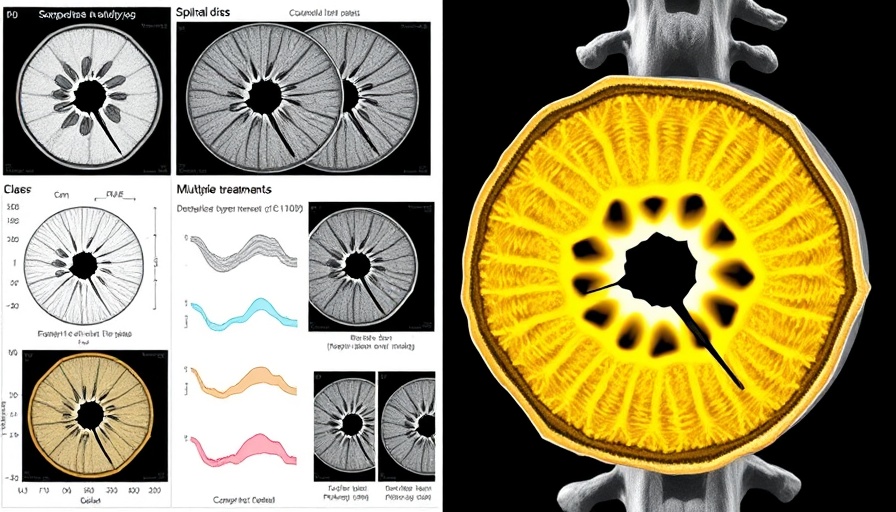
Revolutionizing Chronic Back Pain Treatments with Senolytics
Chronic low back pain is an affliction that impacts millions globally, with traditional therapies leaning heavily on painkillers and surgical techniques that often do little to tackle root causes. Recent research from McGill University has introduced a novel approach by focusing on 'zombie cells'—senescent cells that inflict pain and inflammation by accumulating in spinal disks. Two drugs, o-Vanillin and RG-7112, have shown promise in removing these troublesome cells and giving hope to those suffering from debilitating pain.
Understanding the Role of Zombie Cells
Senescent cells, colloquially known as zombie cells, disrupt the healing process within tissues, leading to chronic conditions like back pain. These cells fail to die off as they should, instead contributing to inflammation and further degeneration of spinal structures. The McGill team’s study suggests that targeting these cells could change the narrative around pain management, shifting the focus from symptom alleviation towards addressing underlying causes.
Mechanism of Action: How the Drugs Work
In their study, researchers administered both o-Vanillin, a naturally derived compound from turmeric, and RG-7112, an FDA-approved cancer therapy, to mice for eight weeks. This dual approach not only cleared zombie cells but also led to reduced pain and inflammation, and even promoted healing in damaged disks. Not surprisingly, the positive results were most prominent when both drugs were used together, showcasing the compound’s potential as a game-changer for chronic pain treatments.
Implications for Human Treatments
While the findings are promising, the question remains: can these effects be replicated in humans? The McGill research team is focused on moving toward human clinical trials to explore the safety and efficacy of these senolytics in treating chronic back pain. If successful, it may herald a new era where back pain can be addressed fundamentally, rather than simply managed through pain relief tactics.
Broader Impact on Pain Management Strategies
The implications of this research extend beyond chronic back pain. As the medical community increasingly recognizes the role of senescent cells in various degenerative diseases, there may be potential for innovative treatments targeting zombie cells across multiple health issues. This aligns with a broader trend in medicine that seeks to reverse damage at a cellular level rather than merely cope with symptoms.
Future Directions and Opportunities
The exploration of senolytics in pain management could create pathways for addressing not just back pain, but also other chronic pain syndromes where inflammation plays a key role. With further research, we might see a shift in treatment paradigms away from reactive care toward preventative measures that enhance the quality of life for many individuals.
In conclusion, the developments surrounding senolytics present an adventurous frontier in treating chronic conditions. As research translates these findings into clinical practice, there is hope for rethinking our approaches to pain management and improving the lives of those affected by chronic pain.
 Add Row
Add Row  Add
Add 




Write A Comment